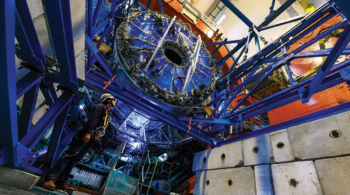 Read article 'Adapting CLIC tech for FLASH therapy'
Read article 'Adapting CLIC tech for FLASH therapy'
Adapting CLIC tech for FLASH therapy
A collaboration between CERN and Lausanne University Hospital will see technology developed for the proposed Compact Linear Collider drive a novel cancer radiotherapy facility.











